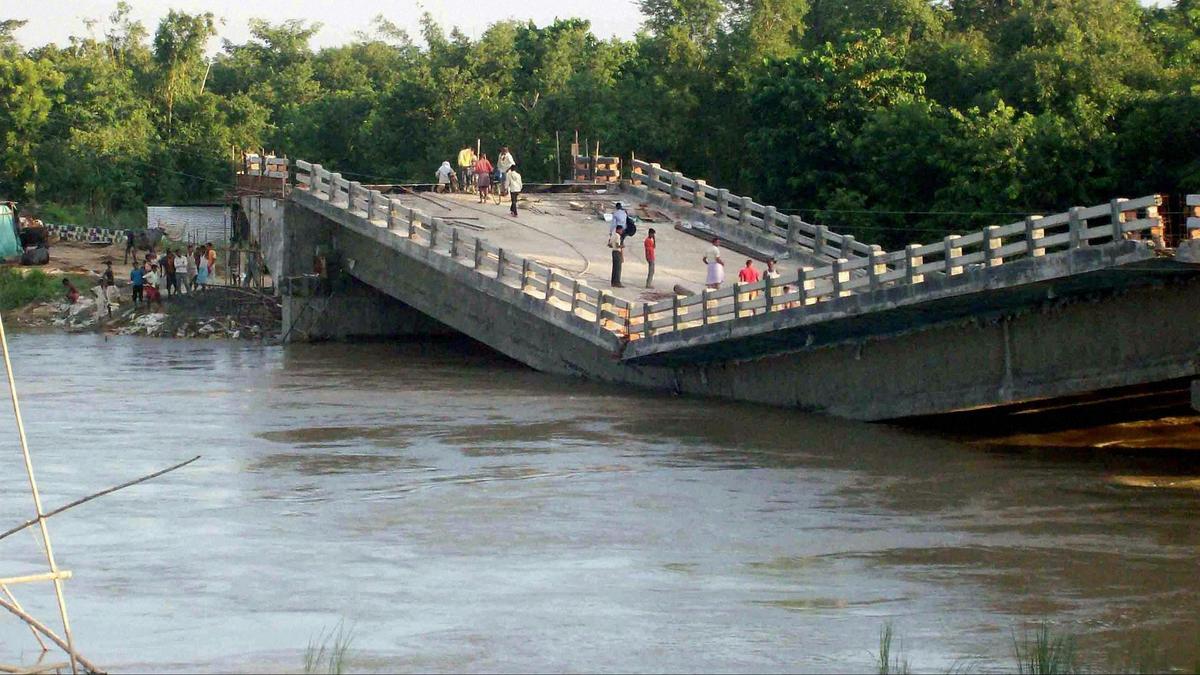The Shock of Crumbling Infrastructure and the Path Forward

- 15 Sep 2024
Infrastructure is a cornerstone of economic development, and in a rapidly growing economy like India’s, its robustness is vital. Recent incidents, particularly the collapse of several under-construction bridges in Bihar, have cast a spotlight on significant issues within the Indian infrastructure sector, particularly in terms of quality control and project management. With the country's aim to become a developed nation by 2047, addressing these challenges is crucial for sustaining economic growth and ensuring safety.
Current Challenges
- Cost Overruns and Delays: One of the most pressing issues is the frequent occurrence of cost overruns and delays. According to a report by the Ministry of Statistics and Programme Implementation, 431 infrastructure projects with investments exceeding ?150 crore each have faced cost overruns totaling ?4.82 lakh crore as of December 2023. Additionally, a significant percentage of projects are delayed, with 36% running behind schedule by 25 to 60 months and 15% delayed for over 60 months.
- Bureaucratic Hurdles: Infrastructure projects often face delays due to the complex maze of clearances required. The implementation status of many projects indicates a lack of comprehensive planning and coordination, especially in urban infrastructure projects managed by local bodies that may lack sufficient capacity and expertise.
- Project Management Deficiencies: Traditional project management practices in India are often outdated. There is a need for an overhaul to incorporate modern tools and techniques for real-time data management and analysis. Insufficient attention during the planning stages of projects exacerbates these issues, leading to increased costs and project failures.
Path Forward
1. Integrating Modern Practices: Adopting modern project management practices is essential. This includes real-time data management, use of advanced analytics, and adopting global best standards. For example, in the United Kingdom, the Infrastructure and Projects Authority focuses on refining project processes, while countries like China and Saudi Arabia have established agencies dedicated to end-to-end project delivery.
2. PM Gati Shakti National Master Plan: India has initiated the PM Gati Shakti National Master Plan, aimed at integrating various government departments and stakeholders into a unified platform. This GIS-based ERP portal is designed to monitor real-time progress and enhance coordination among departments. While this initiative is promising, the effectiveness will depend on the quality of implementation and oversight.
3. Holistic Program Management Approach: The “Program Management Approach” used in industrial corridor development projects, like the Shendra-Bidkin in Aurangabad, exemplifies effective management of multiple projects simultaneously. This disciplined approach, involving systematic coordination of resources and information, can be applied more broadly across infrastructure projects.
4. Professional Training and Certification: To build a capable workforce, there is a need to establish agencies for professional training in project management. Similar to the Institute of Chartered Accountants of India, such agencies can focus on developing professional ethics and responsibilities in project execution and oversight.
Conclusion
With substantial taxpayer money allocated for infrastructure development, it is imperative to prevent the pitfalls of cost overruns and project failures. A robust program management system, incorporating modern practices and professional training, will enhance the efficiency and effectiveness of infrastructure projects. This approach will not only support India’s high-growth trajectory but also contribute to creating a safer, more affluent future for its citizens.
